DEFINITION OF TERMS:
- KEYSTONE means they are listed by National Wildlife Federation as core plants for a wildlife garden in my ecoregion (Ecoregion 8).
- NOT QUITE NATIVE means they are slightly out of range as determined by GoBotany and NY Flora Atlas.
- Otherwise the plant is a NY-native or native to the area noted.
NOT QUITE NATIVE: False indigo (Baptisia australis)
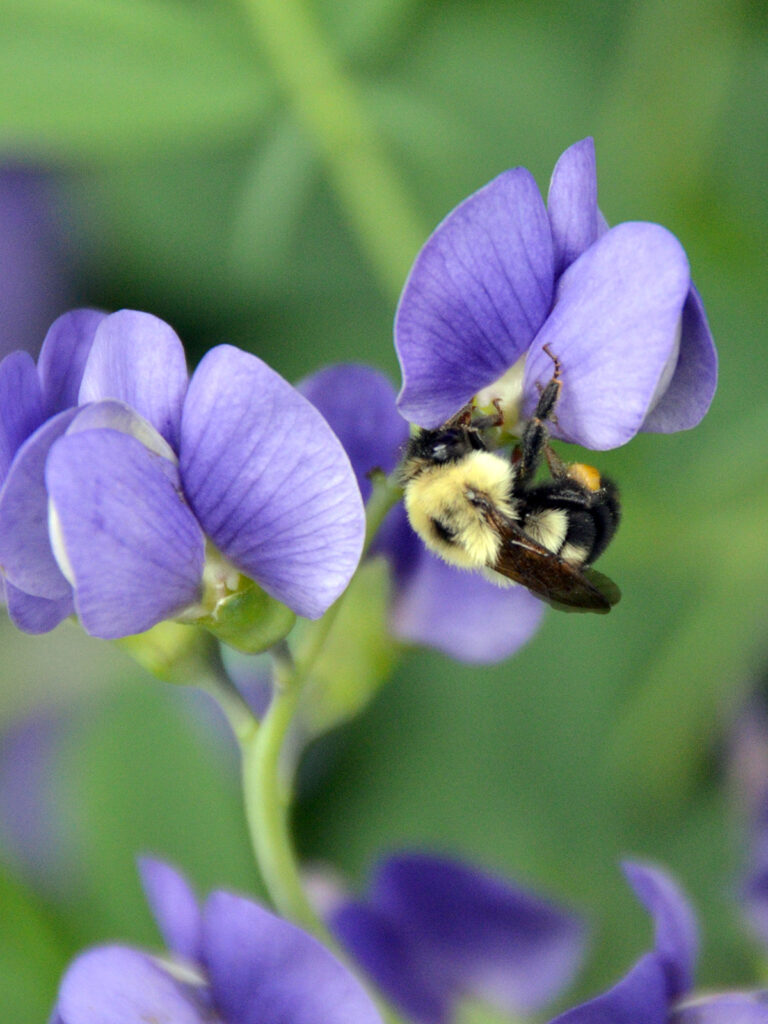
This member of the pea family has beautiful gray-green foliage, delightful blue flowers, and attractive black seed pods.
Its name of “false indigo” refers to it being used as a substitute for a plant that produced a superior blue dye.
It’s a host plant for the orange sulphur, clouded sulphur, and eastern-tailed blue butterflies as well as for the silver-spotted skipper.
** SPECIAL VALUE TO NATIVE BEES **
** SPECIAL VALUE TO BUMBLE BEES **
- Learn more:
- Wildflower Center: False indigo
Downy wood mint (Blephilia ciliata)
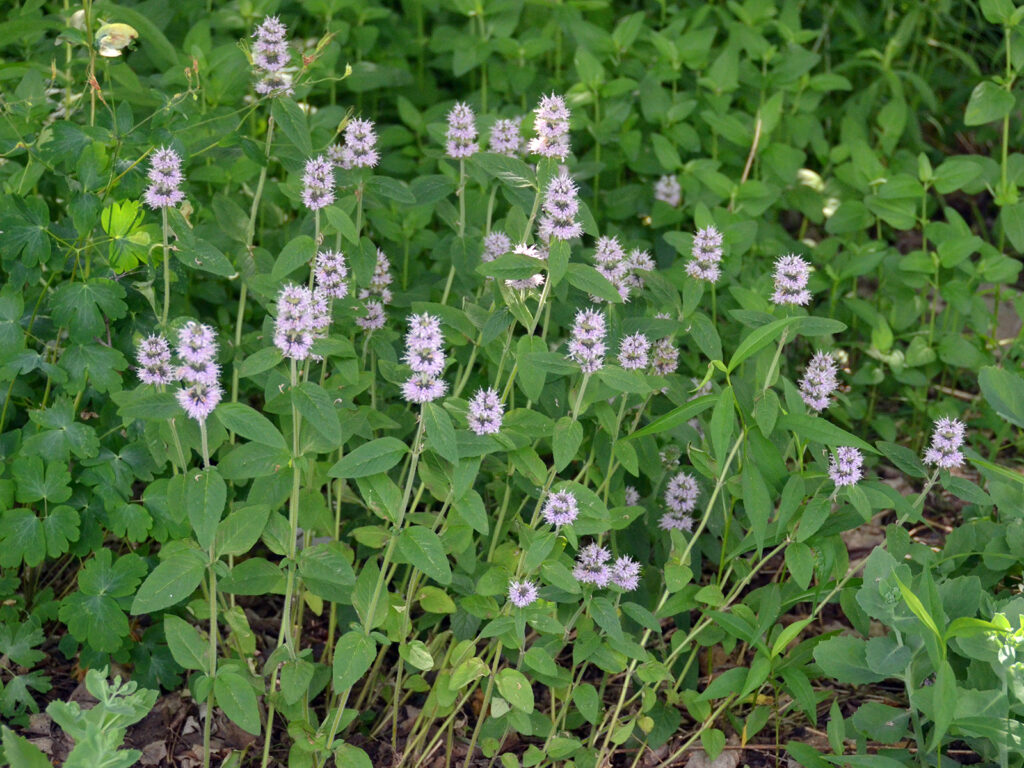
I’m hoping this spreads more. It’s a pretty plant, and it’s great for the bees!
- Learn more:
- Wildflower Center: Downy wood mint
MIDWEST NATIVE: Boltonia (Boltonia asteroides ‘Snowbank’)
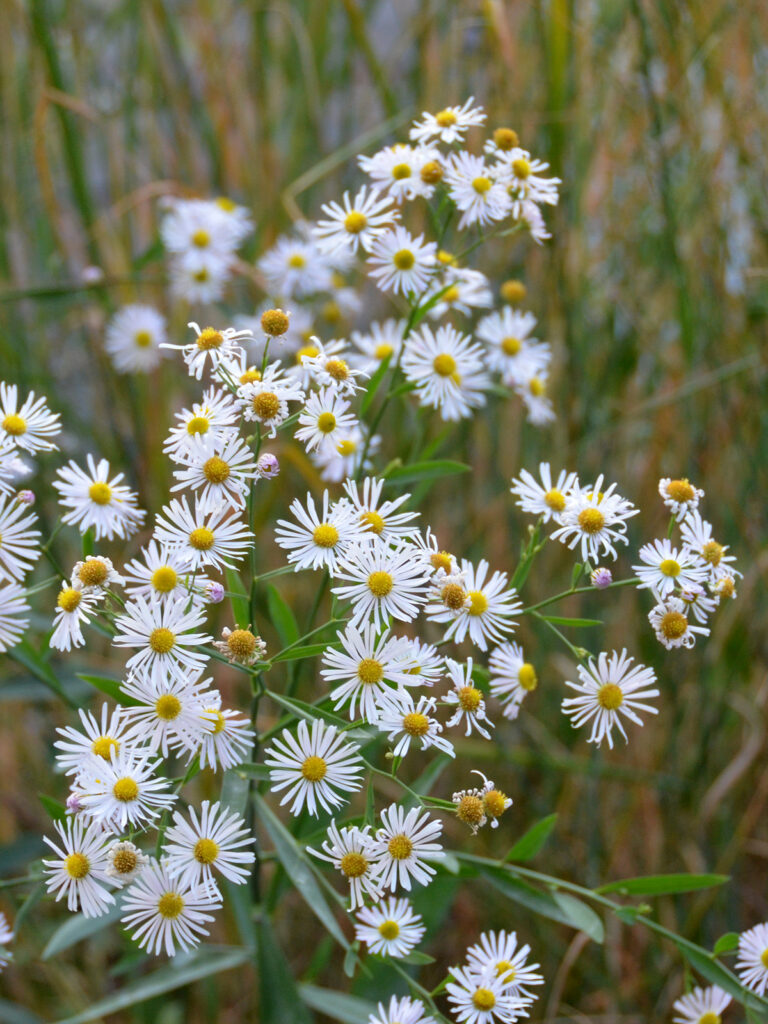
Another plant that surprised me by not being a NY-native!
I grew this mixed in with native grasses.
I was very surprised to see, though, that there is much less pollinator activity around this plant. The bees seem to prefer nectaring instead on the goldenrods and other asters, so I’ve eliminated most of it, though I find a few stray seedlings around.
Wildlife: Nectar for butterflies
- Learn more:
- Wildflower Center: Boltonia
Marsh marigold (Caltha palustris)
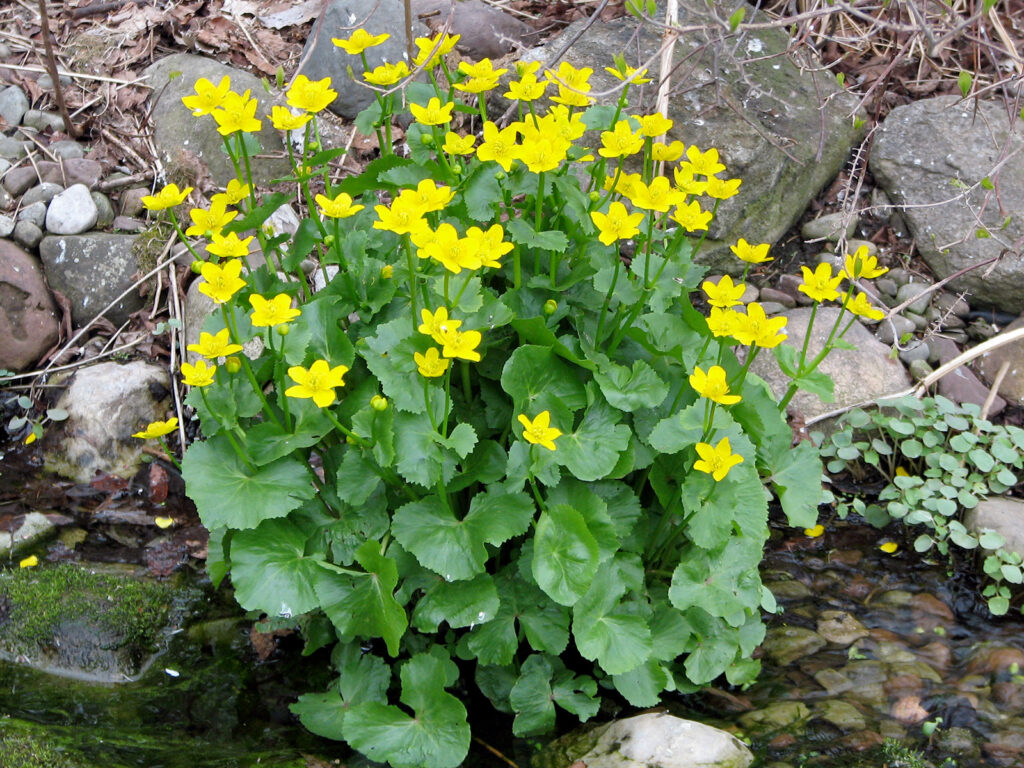
Marsh marigold brings a beautiful gold color to the spring stream.
It doesn’t grow in the pond, but rather in very wet areas. We have one growing in the stream and one in the pond. It has survived many years, and has actually reseeded a couple of plants.
Wildlife: Birds
- Learn more:
- Wildflower Center: Marsh marigold
NOT QUITE NATIVE: Wild hyacinth (Camassia scilloides)
We got this at the Millersville Native Plant conference. We have no idea what it looks like because we bought it as a bulb in a little pot of dirt. How’s that for faith! The next spring it came up like this. We’ll have to keep a plant marker near it because it would be easy to think this was a weed when it first starts growing in the spring.
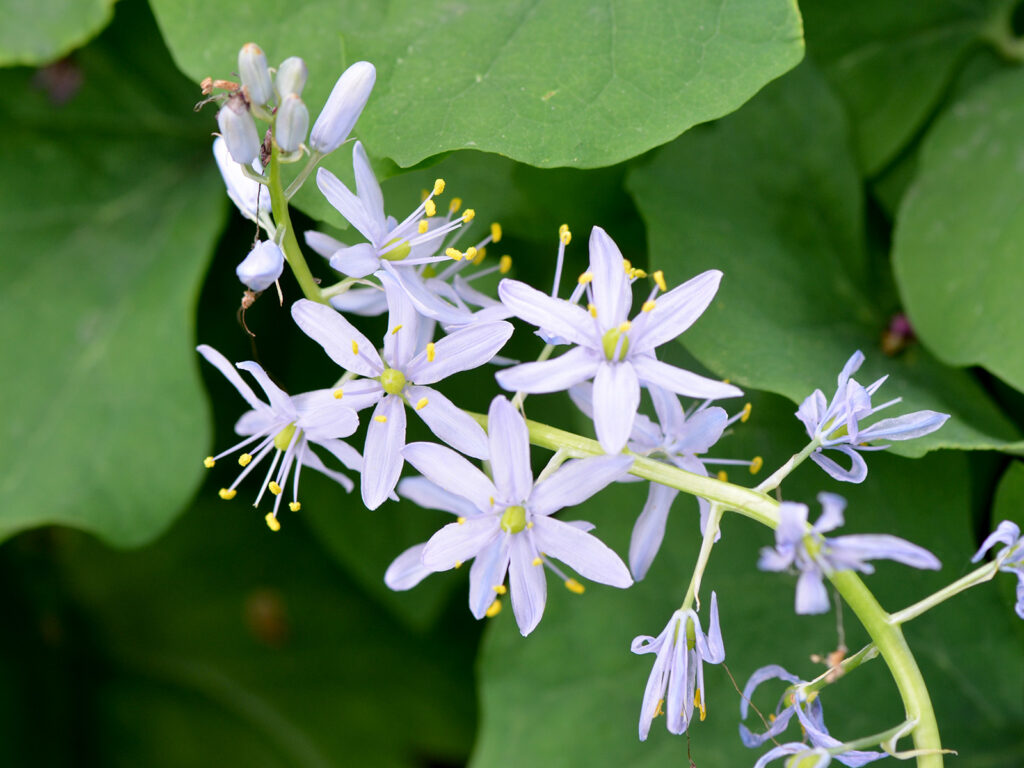
Wildlife: Nectar for bees and butterflies
- Learn more:
- Wildflower Center: Wild hyacinth
Tall bellflower (Campanulastrum americanum)
We planted this 2019. It will interesting to see how this NATIVE type of campanula since we’ve been battling the non-native plant for decades!
Use Wildlife: Hummingbirds
Attracts: Hummingbirds
** SPECIAL VALUE TO NATIVE BEES **
- Learn more:
- Wildflower Center: Tall bellflower
Wild senna (Cassia hebecarpa) aka Senna hebecarpa
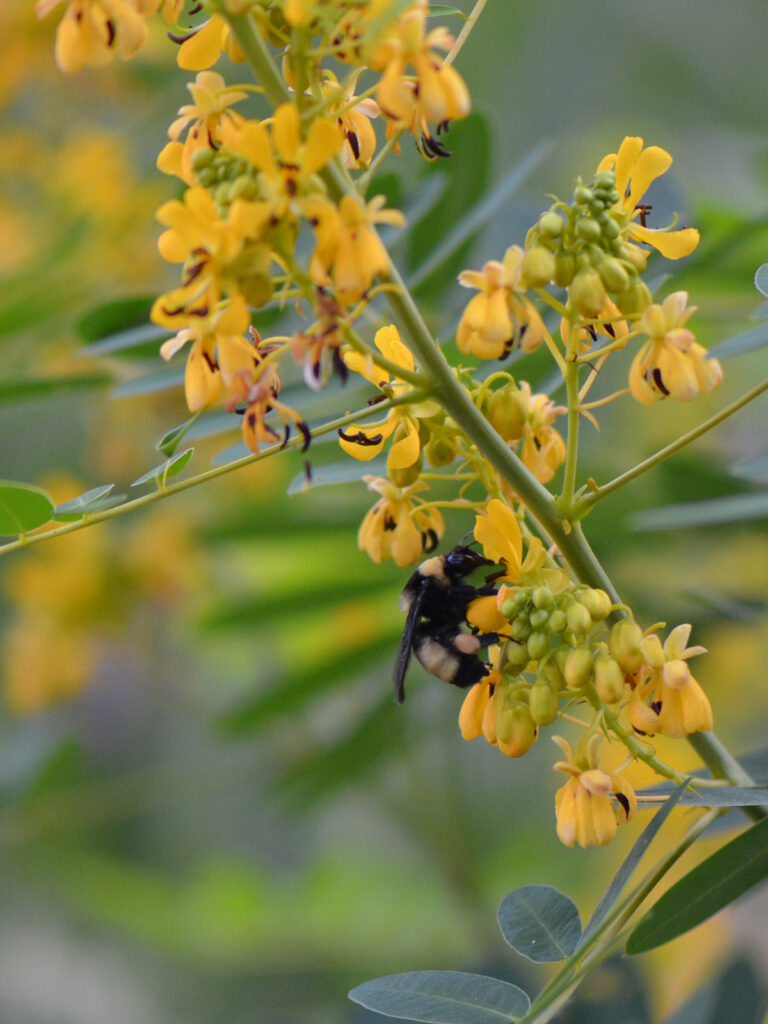
I and the insects like these yellow flowers. Senna is a legume, so it also adds nitrogen to the soil.
It’s a tall plant, which some people use as a hedge. I usually prune some of the plants and they still bloom.
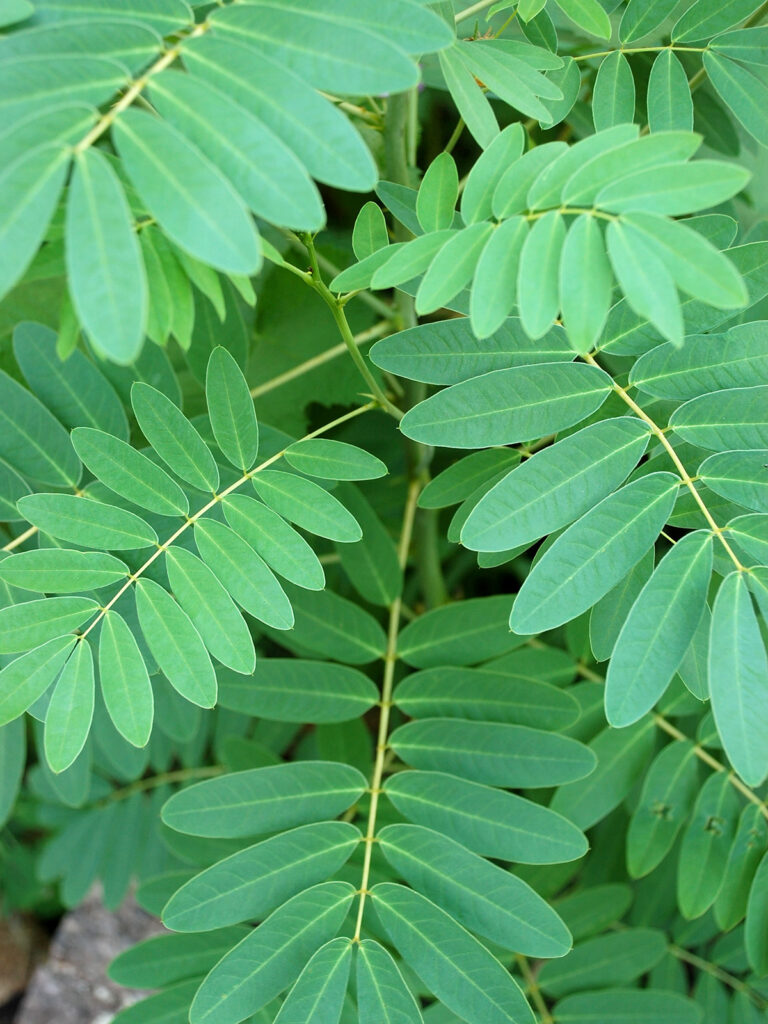
I love the clean, architectural look of the foliage.
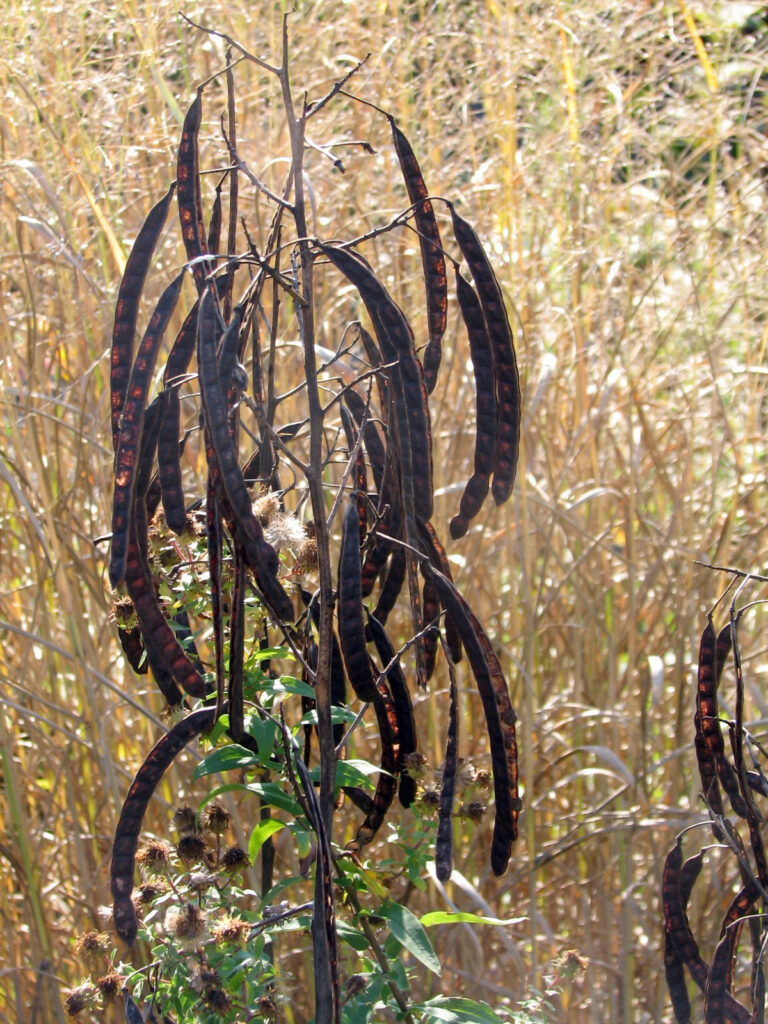
The seeds are attractive, too, here pictured in front of switchgrass.
It does reseed, so I’ve had to edit some of them out.
Senna is a host plant for the clouded sulphur butterfly.
Wildlife: Butterflies, hummingbirds
Larval host: Cloudless sulphur
** SPECIAL VALUE TO BUMBLE BEES **
- Learn more:
- Wildflower Center: Wild senna
